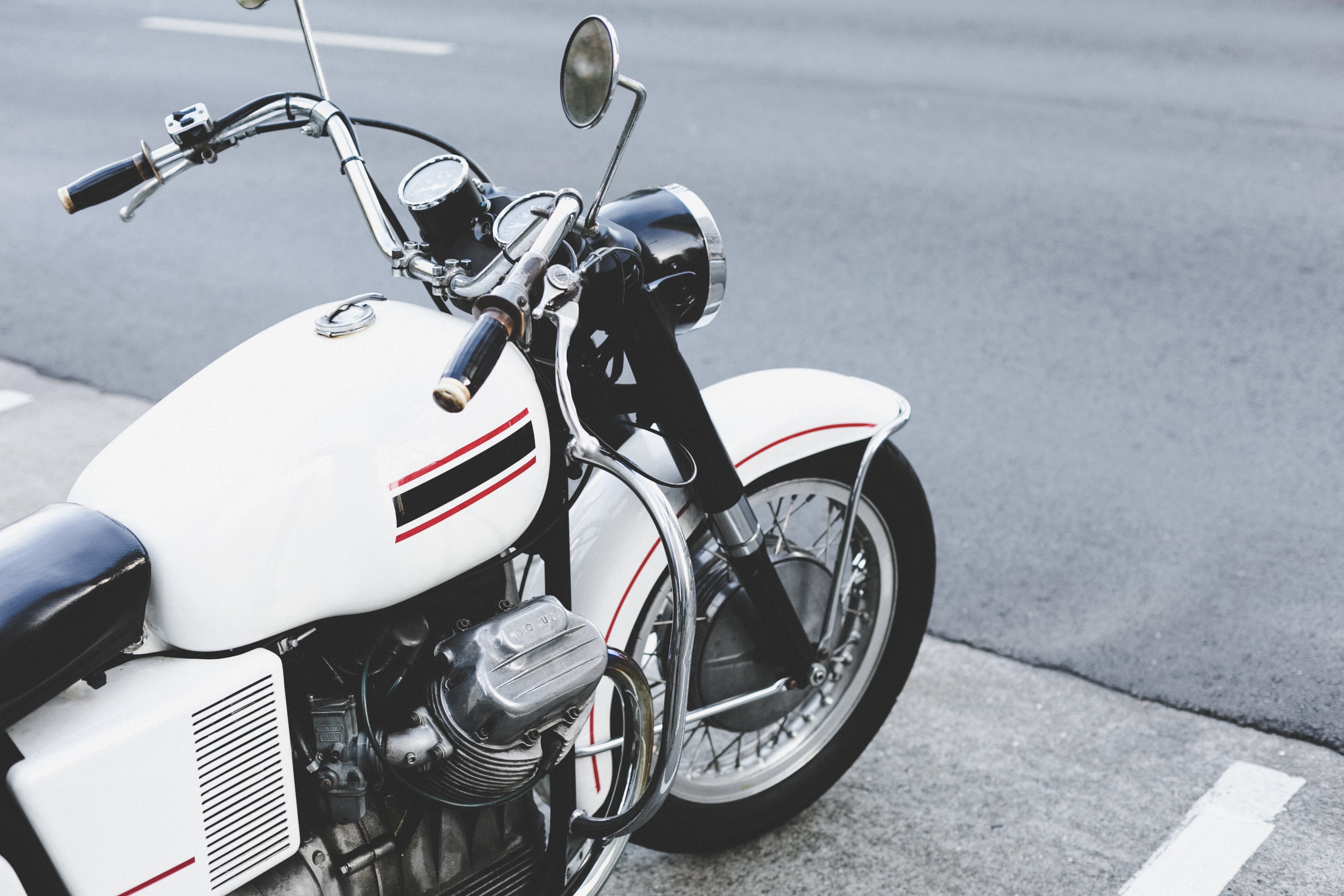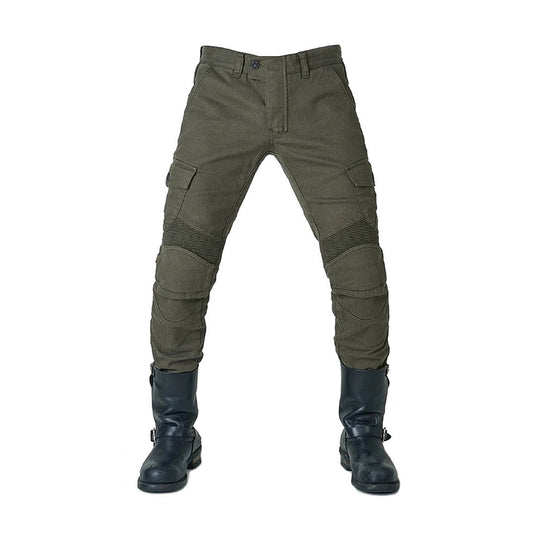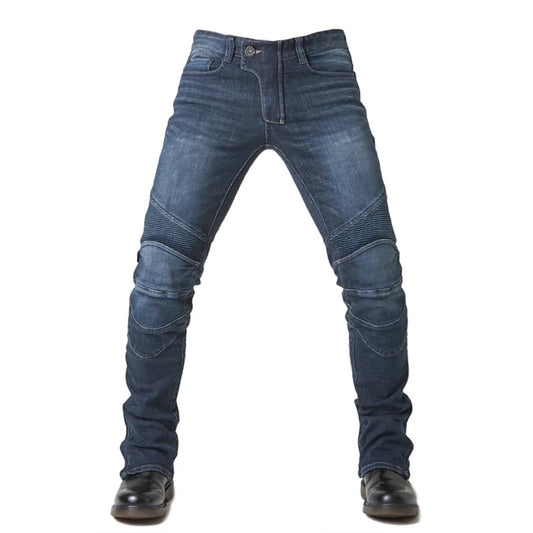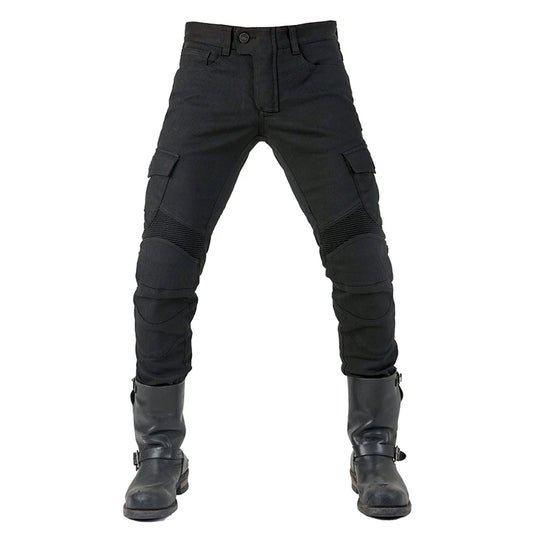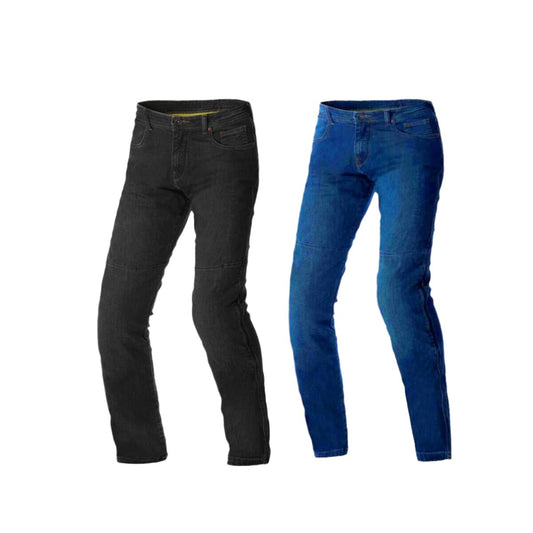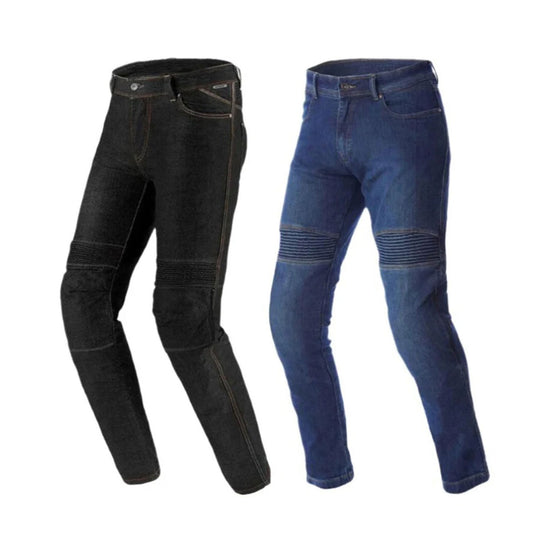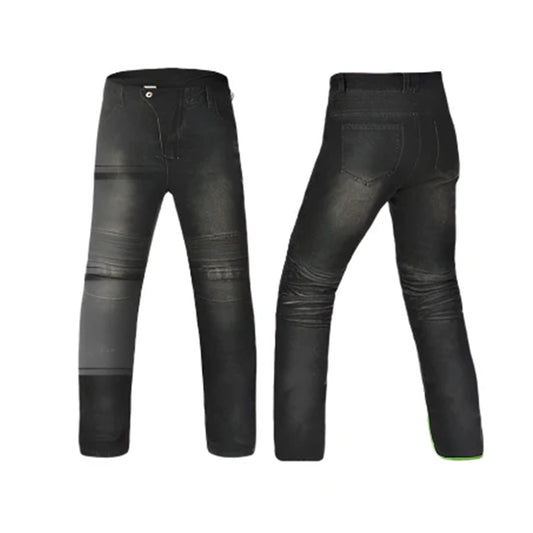When you think of a motorcyclist, what image comes to mind? A rider in a leather biker jacket, helmet tucked under one arm, boots scuffed from miles on the road — it’s an iconic look.
But while motorcycle gear might make for a cool aesthetic, its true purpose runs far deeper than fashion.
Proper motorcycle gear is not just about looking good; it's a lifeline. It protects riders from injury, enhances comfort during rides, improves visibility on the road, and even contributes to long-term health and well-being.
In this article, we’ll explore the fundamental importance of motorcycle gear, backed by data, real-life crash scenarios, and in-depth analyses of each essential piece of riding equipment.
Why Do So Many Riders Skip Proper Gear?
Despite overwhelming evidence of its benefits, many riders still choose to ride without full protective gear.
According to the National Highway Traffic Safety Administration (NHTSA), in 2021 alone, over 5,000 motorcyclists were killed in crashes in the United States. And while helmets are often the first thing people think of when discussing safety, clothing plays an equally vital role in reducing the severity of injuries.
Yet, many riders skip proper gear for reasons like:
- “It’s too hot.”
- “I’m only going a short distance.”
- “I ride slowly; I don’t need it.”
- “It looks dorky.”
But here’s the reality: riding without proper gear is like driving a car without airbags or seatbelts — you may be fine today, but the risks are always there.
Let’s break down why every piece of gear matters and how skipping any of it can put you at risk.
What is Proper Motorcycle Gear?
Proper motorcycle gear includes several key components, each serving a specific function:
- Helmet – Head protection is non-negotiable.
- Jacket & Pants – Whether leather or textile, these protect your skin and limbs from abrasion.
- Gloves – Critical for grip, vibration reduction, and hand protection.
- Motorcycle Boots – Ankle Support and Foot Protection Matter More Than Most Realise.
- Protective Inserts (Armour) – CE-rated armour in elbows, knees, shoulders, and back offers impact protection.
Together, these pieces form what experts call the “motorcycle safety triangle”: Helmets, Clothing, and Training.
Let’s dive into each component and uncover why they’re so crucial.
The Science Behind Motorcycle Gear
Leather vs. Textile: Which One Works Better?
One of the most common debates among riders is whether leather or textile gear is better.
Leather:
- Naturally abrasion-resistant
- Denser than most synthetic materials
- Breaks in with use
- Heavier and less breathable
- Takes longer to dry after rain
Textile (e.g., Cordura, Kevlar blends):
- Often lighter and more breathable
- Can offer multi-season versatility
- More flexible and easier to move in
- Tends to wear out faster under heavy abrasion
Fact: A 2016 study published in The Journal of Trauma and Acute Care Surgery found that riders wearing textile gear sustained injuries at twice the rate of those in leather biker suits during low-to-moderate speed crashes.
However, modern textile motorcycle jackets with reinforced panels and armour inserts have significantly closed that gap in recent years.
For example, brands like Rev’it, Alpinestars, and Dainese now produce hybrid textile gear with high-density foam armour and aramid fibre reinforcements that rival the performance of traditional leather.
Why You Should Never Ride Without Gloves?
Your hands are one of the most vulnerable parts of your body while riding.
A 2020 report by the Insurance Institute for Highway Safety (IIHS) showed that hand injuries accounted for nearly 30% of all motorcycle-related trauma cases.
Without gloves:
- Your grip becomes slippery in wet conditions
- Vibration fatigue sets in faster
- Skin tears easily during a slide or a fall
Good motorcycle gloves :
- Have knuckle and wrist protection
- Are windproof and waterproof
- Offer good tactile feedback
- Fit snugly but not restrictively
In a 2019 crash test conducted by MotoSafety Labs, a rider wearing basic cotton gloves suffered second-degree burns and abrasions after sliding on asphalt for just 2 seconds. Meanwhile, another rider wearing CE-certified gloves walked away with only minor bruising.
The Role of Boots: Not Just For Show
Many riders underestimate the importance of boots.
In a crash, your feet and ankles hit the ground first, and unprotected, they’re prone to serious injury.
Real-world example: A 2018 case study from the University of California, San Francisco, examined 150 motorcycle accident victims. Over 40% had suffered foot or ankle injuries, and nearly 70% of those were wearing sneakers or casual shoes.
Proper motorcycle boots:
- Have reinforced toes and ankles
- Are oil- and slip-resistant
- Provide shin protection in cruiser-style boots
- Help maintain control during long rides
Helmets: The Most Important Piece of Gear
Despite being mandatory in many states, some riders still choose to ride without helmets.
According to NHTSA, helmets are 37% effective in preventing fatal injuries to motorcycle riders and 41% effective for passengers.
And yet, in states without helmet laws, over 50% of riders choose not to wear them.
Types of helmets :
- Full-face – Best protection
- Modular – Combines full-face and open-face convenience
- Open-face – Stylish but less protective
- Half-helmet – Minimal protection, primarily for show
Tip: Look for helmets certified by the DOT (Department of Transportation) or ECE (European Committee for Standardisation), which meet rigorous impact and penetration standards.
Take the Shoei RF-1200, for instance — a top-rated full-face helmet that meets both DOT and ECE standards, featuring a multi-piece shell for enhanced impact absorption and a noise-dampening interior for long-distance comfort.
Real Crash Scenarios: How Gear Makes a Difference
Let’s break down a few real-life scenarios where proper gear made a life-or-death difference.
Scenario 1: Slide on Asphalt at 35 mph
- Rider A wore a full leather suit, gloves, boots, and a full-face helmet.
- Rider B was in jeans, a t-shirt, sneakers, and no helmet.
Outcome :
- Rider A suffered minor bruises and a torn jacket.
- Rider B had severe road rash, broken fingers, and a concussion.
Lesson: Even at relatively low speeds, gear makes a significant difference.
Scenario 2: Rainy Day Crash on Curvy Road
- Rider C wore a waterproof textile jacket, gloves, and boots.
- Rider D had cotton clothes and no rain gear.
Outcome :
- Rider C stayed dry, protected, and alert.
- Rider D lost traction due to cold muscles and wet clothing, leading to a more severe fall.
Lesson: Weather-appropriate gear isn’t optional — it’s essential.
Scenario 3: Nighttime Collision with a Car
- Rider E wore black gear with no reflective elements.
- Rider F wore bright yellow gear with reflective stripes.
Outcome :
- Rider E was thrown over the hood with serious injuries.
- Rider F was seen early enough and avoided a collision.
Lesson: Visibility saves lives.
Common Pain Points Riders Face — And How the Right Gear Helps
Let’s look at some of the most common problems riders face — and how choosing the proper motorcycle clothing and equipment can help.
Staying Cool in Summer Heat
If you’ve ever ridden through a British summer (or even a warm spring day), you know how quickly things can heat up under all that gear.
The problem: Overheating and sweat build-up can lead to fatigue, distraction, and even heat exhaustion, especially during long rides or heavy traffic.
The solution: Look for jackets and trousers made from breathable materials, such as mesh or lightweight textile fabrics. These allow airflow while still offering abrasion protection. Pair them with moisture-wicking base layers to keep you dry and cool. Some brands even provide cooling vests or ventilation zippers for extra breathability.
Tip: Light-coloured gear reflects sunlight better than dark colours, helping you stay cooler.
Keeping Your Hands Warm in Winter
There’s nothing worse than numb fingers halfway through a ride, especially when you need complete control over your bike.
The problem: Cold wind at speed robs your hands of warmth fast, making it hard to grip the handlebars and operate controls safely.
The solution: Invest in heated gloves with built-in battery packs or wear thermal glove liners under your regular gloves. These provide an extra layer of insulation without sacrificing dexterity. Look for gloves with windproof and waterproof features to keep the chill out.
Tip: Keep hand warmers in your jacket pockets for quick relief during longer winter rides.
Reducing Fatigue with Better Posture
Long-distance riding can leave your back and shoulders sore if your gear doesn’t support your body correctly.
The problem: Poorly designed or stiff jackets and trousers can restrict movement and encourage bad posture, leading to muscle strain and discomfort.
The solution: Opt for ergonomic jackets with flexible panels and padded shoulders that conform to your body. Padded shorts or riding trousers with lumbar support can also help alleviate pressure on your lower back, keeping you comfortable for extended periods of time.
Tip: Adjust your bike setup too — a slight change in handlebar height or footpeg position can work wonders alongside supportive gear.
Being Seen by Other Road Users
In the UK, where traffic is often heavy and weather conditions vary, visibility is a top concern.
The problem: Many accidents occur because drivers fail to see motorcyclists in time, especially in low-light conditions or adverse weather.
The solution: Wear high-visibility gear in bright colours like yellow or orange. Add reflective patches to your jacket, helmet, and boots so you stand out even in low-light conditions. Some jackets come with reflective detailing already built in.
Tip: A reflective vest can be a handy addition for urban riding or early morning commutes.
Staying Safe on Wet Roads
Rain is a national sport in the UK, and it brings real risks for motorcyclists.
The problem: Wet roads are slippery, increasing the chance of sliding or losing traction. Worse, soaked clothing can weigh you down and make you colder.
The solution: Non-slip motorcycle boots with deep treads give you better grip when stopping or walking your bike. Pair them with waterproof gear — think jackets and trousers with sealed seams — to stay dry and mobile.
Tip: Carry a compact raincoat or umbrella just in case. It can be a lifesaver if the skies open up unexpectedly.
Reducing Wind Noise and Fatigue
Nothing ruins a peaceful ride faster than constant wind noise buzzing in your ears.
The problem: At higher speeds, wind turbulence creates loud noise that causes fatigue, headaches, and reduced awareness.
The solution: Choose an aerodynamic helmet with noise-dampening features. Some models include acoustic foam linings or adjustable vents that reduce wind turbulence. You can also try earplugs designed for motorcyclists, which minimise noise without blocking essential sounds, such as horns or engine feedback.
Tip: A well-fitting helmet makes a huge difference — avoid oversized or loose-fitting styles that increase wind resistance.
Avoiding Chafing and Discomfort
Chafing might not sound serious, but it can ruin a ride, especially on longer journeys.
The problem: Ill-fitting gear can rub against your skin, causing irritation and sore spots. Tight areas can also restrict movement and circulation.
The solution: Always choose a gear that fits properly. Look for jackets and trousers with adjustable waistbands, Velcro cuffs, and stretchable panels in key areas, such as the elbows and knees. Proper fit ensures comfort without restricting your movement.
Tip: Try before you buy — or read detailed size guides carefully if shopping online.
Adapting Your Motorcycle Gear for Different Climates
Weather plays a massive role in how comfortable and safe you are on the road.
Cold Weather Riding Tips:
- Layer up with thermal base layers
- Use heated grips or gloves
- Choose insulated jackets and pants
- Keep extremities warm with thick socks and gloves
Hot Weather Riding Tips:
- Opt for mesh-lined jackets and ventilated pants
- Stay hydrated and wear UV-protective gear
- Choose light-colored gear to reflect heat
- Consider cooling vests or neck wraps
Wet Weather Riding Tips:
- Invest in waterproof gear (not just water-resistant)
- Use anti-fog visors and lens coatings
- Choose boots with sealed seams
- Carry a compact rain suit for emergencies
Long-Term Health Benefits of Wearing Proper Gear
Beyond immediate crash protection, proper gear also contributes to long-term health benefits.
Reduced Chronic Pain
Wearing gear with proper padding and ergonomic design reduces joint strain and helps prevent chronic pain in the knees, wrists, and lower back.
UV Protection
Motorcyclists spend a lot of time in the sun. Prolonged exposure increases skin cancer risk. UV-protected gear (especially jackets with UPF ratings) can reduce UV penetration by up to 98%.
Improved Posture and Circulation
Well-fitted gear supports natural riding posture, improves blood flow, and reduces fatigue, especially on long-distance rides.
Who Needs Proper Gear the Most?
Contrary to popular belief, new riders aren’t the only ones at risk.
Data shows that:
- Over 60% of motorcycle fatalities involved experienced riders
- More than half of the injured riders weren't wearing full gear
- Only 45% of riders owned both a summer and winter gear set
Whether you're a daily commuter, weekend adventurer, or track racer, everyone benefits from proper gear.
Micro Queries Answered: The Small Questions That Matter
Here are some of the most common micro queries riders ask — and the facts behind them.
Can I Wear Denim Instead of Motorcycle Pants?
While denim is thicker than regular jeans, it’s no match for asphalt. Studies show that regular jeans tear within 1.5 seconds of contact with pavement during a slide.
Motorcycle pants (leather or textile) typically last 5–10 times longer before tearing, providing you with crucial seconds of protection.
Do I Need a Back Protector?
Yes. A 2019 Australian study found that back injuries accounted for 12% of all motorcycle trauma cases, and only 20% of riders wore any kind of back protection.
Back protectors absorb impact and prevent spinal compression injuries, especially during high-speed falls.
Are Mesh Jackets Good Enough for Protection?
Mesh jackets are great for ventilation in the summer, but they offer minimal abrasion resistance. They should be used with caution and ideally paired with armour inserts and layered with protective base layers.
Do Colored Helmets Make a Difference?
Bright-coloured or reflective helmets increase visibility to other drivers, which is crucial since over 75% of motorcycle accidents involve another vehicle.
White or yellow helmets are shown to be more visible in daylight, while reflective strips provide additional visibility at night.
Is It Okay to Ride Barefoot in Summer?
Riding barefoot is extremely dangerous. Your feet are exposed to:
- Hot exhaust pipes
- Gravel and debris
- Risk of getting caught between the bike and the ground during a fall
Even flip-flops offer zero protection and are banned in many riding communities.
How Often Should I Replace My Gear?
- Helmet: Every 5 years or after any impact
- Leather Jacket/Pants: Every 3-5–10 years, depending on usage
- Textile Gear: Every 3–5 years
- Gloves/Boots: Every 2–3 years or sooner if worn out
Remember: Even if the gear appears okay, internal damage (such as armour degradation) may not be visible.
Final Thoughts: Gear Up for Life, Not Just for Looks
Motorcycling is thrilling, liberating, and deeply personal. However, it also comes with risks, many of which can be avoided with the right gear.
You wouldn’t drive a car without airbags or seatbelts — so why ride a motorcycle without a helmet, gloves, or jacket?
Proper motorcycle gear is:
- Life-saving in crashes
- Comfort-enhancing in all seasons
- Visibility-improving in traffic
- Confidence-building for new riders
So next time you throw on your jacket, remember: it’s not just about looking cool — it’s about staying alive.
Gear Up With Motrox – Your Riding Partner
At Motrox, we understand how crucial the right gear is for every ride — whether you're braving the rain-soaked streets of Glasgow or hitting the open roads of the Cotswolds.
That’s why we offer a wide range of high-quality motorcycle gear across the UK, from durable jackets and pants to helmets, gloves, and boots designed for comfort, protection, and performance.
Ride smarter, safer, and in style with Motrox — your trusted partner on two wheels.

